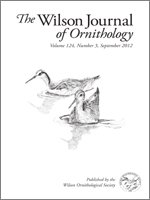We studied the ecology and habitat selection of the Magellanic Plover (Pluvianellus socialis) in southern Patagonia during two austral summers. We searched for the presence of this rare species along the shores of 53 privately-owned lakes and portions of Lago Argentino across 12,000 km2 of steppe habitat in Santa Cruz Province, southern Argentina and compared characteristics of occupied and unoccupied lakes. Aeolian lunette size was a significant predictor of occupancy. Most lakes had only a single pair of breeding birds, although one had 14 pairs. No lake feature successfully predicted number of breeding pairs per lake. Territories were on cobbled beaches on the side of the lake with Aeolian lunettes, and at sites significantly closer to small streams and further from vegetation than random sites. Nest sites within territories had significantly less clay than unused sites. Clutch size was small (1–2) while hatching success was moderate (70%). Future studies of this species should focus on adult and juvenile survival, and the development of a demographic model that assesses the long-term stability of the population.
How to translate text using browser tools
1 September 2012
Ecology and Habitat Selection of the Magellanic Plover (Pluvianellus socialis): A Little-Known Patagonian Shorebird
Carmen Lishman,
Erica Nol
ACCESS THE FULL ARTICLE





